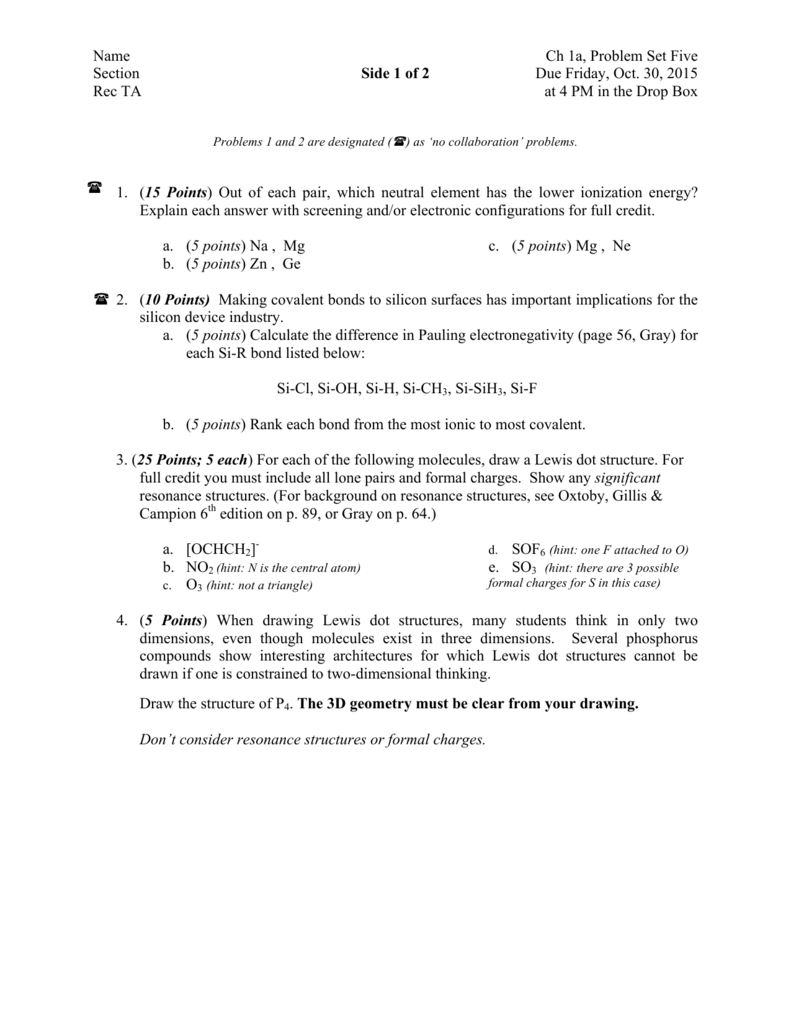The formation of many common compounds can be visualized with the use of Lewis symbols and Lewis diagrams. In a Lewis symbol, the inner closed shells of electrons can be considered as included in chemical symbol for the element, and the outer shell or valence electrons are represented by dots. The dots are placed in four groups of one or two electrons each, with 8 electrons representing a closed shell or noble gas configuration. Lewis diagrams are useful for visualizing both ionic and covalent bonds.
In the idealized ionic bond, one atom gives up an electron to the other, forming positive and negative ions.
The conditions for bonds are that the total charge is zero and that each atom must have a noble gas electron configuration. |
In the idealized covalent bond, two atoms share a pair of electrons, closing the shell for each of them.
The atoms share a pair of electrons, and that pair is referred to as a bonding pair. The pairs of electrons which do not participate in the bond have traditionally been called 'lone pairs'. A single bond can be represented by the two dots of the bonding pair, or by a single line which represents that pair. The single line representation for a bond is commonly used in drawing Lewis structures for molecules. |
Remember, formal charges can sometimes help you decide which is the best Lewis Dot Structure when there is more than one possible structure. Draw the best Lewis Dot Structure for each of the following species. A) BeF 2 b) BCl 3 c) CCl 4 d) PBr 5 e) SI 6. Give the name of the electronic arrangement and the name for the molecular geometry for.

Sometimes it's difficult to tell which of two possible Lewis structures of a compound represents the actual bonding of the molecule. In those cases we resort to calculating what's called the formal charge of each atom. Formal charge is just a way of bookkeeping that helps us to decide which of multiple Lewis structures is the likely true bonding arrangement of a covalent molecule. The sum of the formal charges, with a couple of extra rules, will help us to decide which of multiple-possible valid Lewis structures is likely to be the correct one. Here's how it's done.
Calculating formal charge
Lewis Electron Dot Structure Calculator

- Every chemistry student has to learn how to draw Lewis Dot Structures. The key is to understand the steps and practice. Lewis Structures are important to learn because they help us predict: the shape of a molecule. How the molecule might react with other molecules. The physical properties of the molecule (like boiling point, surface tension, etc.).
- Drawing Lewis Structures (2).Step 2:Draw a reasonable skeletal structure, using single bonds to join all the atoms. –Try to arrange the atoms to yield the most typical number of bonds for each atom. –Apply the following guidelines in deciding what element belongs in the center of your structure.
- Draw the Lewis structure for the molecule or ion. Count the total number of regions of high electron density (bonding and unshared electron pairs) around the central atom. Double and triple bonds count as ONE REGION OF HIGH ELECTRON DENSITY. An unpaired electron counts as ONE REGION OF HIGH ELECTRON DENSITY.
For each atom
- Count the number of valence electrons of the neutral atom.
- Subtract the number of non-bonding electrons (usually in lone pairs).
- Subtract the number of bonds shared by the atom.

Lewis Electron Dot Structure Calculator
Example: CH4 (methane)

The carbon in CH4 has four electrons as a neutral atom. It has no lone pairs, and it shares four bonds, so the formal charge is zero. Each hydrogen atom has one electron as a neutral atom, no lone pairs and shares one bond, for a formal charge of zero. All atoms in the molecule have zero formal charge, the 'happiest' situation for any molecule.
Lewis Dot Structure Calculator With Dots

Example: H3C(CO)CH3, (acetone)
Ionic Lewis Dot Structure Calculator
The central carbon has a formal charge of 4 (valence electrons) - 0 (lone pairs) - 4 (bonds) = 0. The oxygen has a formal charge of 6 - 4 - 2 = 0 (same ordering of terms). Each of the methyl (CH3) carbons has a formal charge of 4 - 0 - 4 = 0